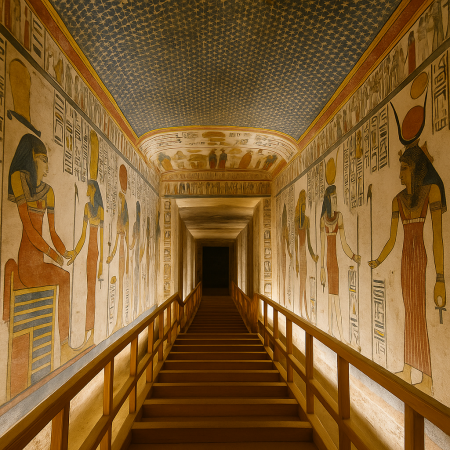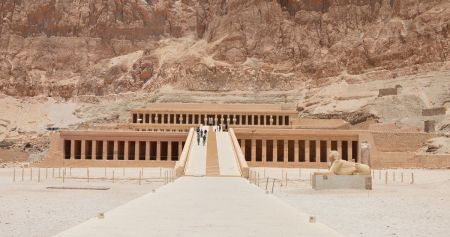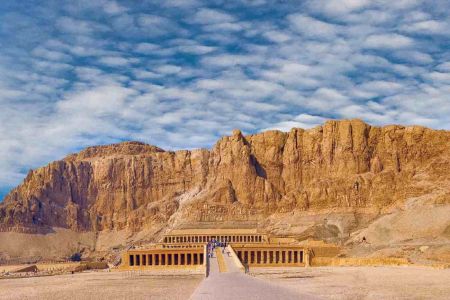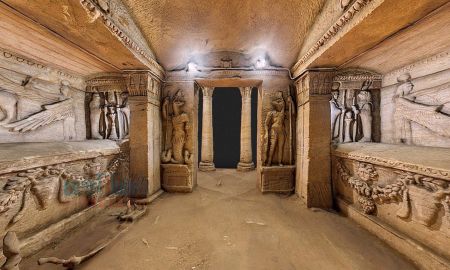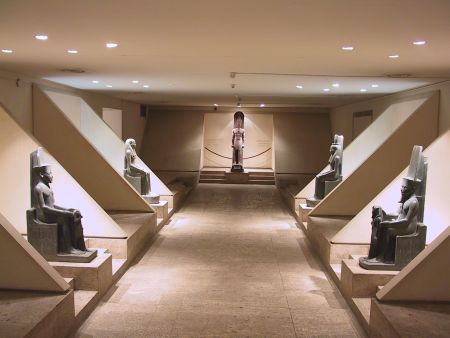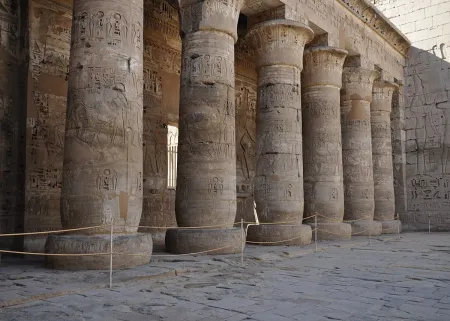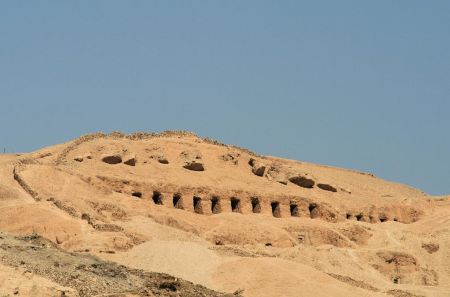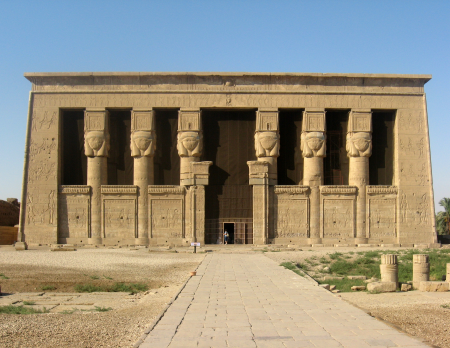The Avenue of Sphinxes: A Timeless Pathway Through Ancient Thebes
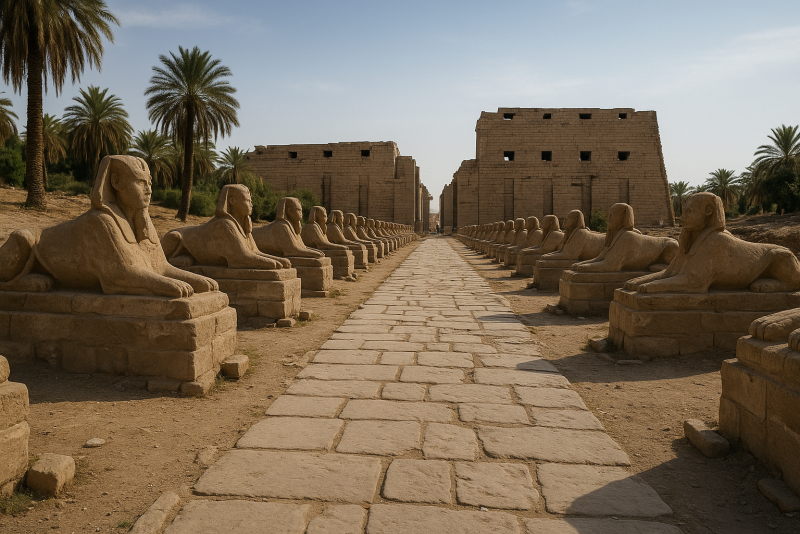
The Avenue of Sphinxes, also known as El-Kebash Road, is one of Egypt’s most remarkable archaeological treasures, stretching between the Luxor Temple and the Karnak Temple Complex. This grand ceremonial pathway once served as a sacred route for pharaonic processions, festivals, and rituals that celebrated the gods and the enduring power of the kings. Today, after years of restoration and excavation, it has been reopened as one of the most spectacular open-air museums in the world, offering travelers a vivid journey into Egypt’s glorious past.
More than just a road paved with ancient stone, the Avenue of Sphinxes symbolizes Egypt’s enduring devotion to its gods, particularly Amun-Ra, the chief deity of Thebes. With rows of over 1,000 sphinx statues—some with human heads, others with rams’ heads—this pathway embodies the grandeur of the New Kingdom and later periods when Thebes was at the heart of political and religious life.
Historical Background of the Avenue of Sphinxes
The construction of the Avenue of Sphinxes dates back to the reign of Pharaoh Amenhotep III (1386–1349 BC), who built the Luxor Temple. However, the full extension of the processional road to Karnak was completed during the reign of Nectanebo I (380–362 BC). Over the centuries, different rulers added to its magnificence, ensuring the avenue reflected their power and devotion to the gods.
The road was primarily used during the annual Opet Festival, one of the most important celebrations in ancient Egypt. During this event, sacred statues of the gods Amun, Mut, and Khonsu were carried from Karnak to Luxor, symbolizing renewal, fertility, and divine blessing upon the land. The sphinxes acted not just as guardians but also as witnesses to the grandeur of these divine rituals.
Architectural Layout of the Sacred Road
The Impressive Scale
The Avenue of Sphinxes stretches for nearly 2.7 kilometers (1.7 miles), linking two of Egypt’s most iconic temples. Excavations have uncovered 1,057 statues aligned on both sides of the road. Each statue is placed at regular intervals, creating a rhythm of sacred guardianship along the pathway.
Types of Sphinx Statues
-
Ram-headed Sphinxes (Criosphinxes): Symbolizing the god Amun, these statues dominate the section closer to Karnak Temple.
-
Human-headed Sphinxes (Androsphinxes): Representing Pharaohs as divine protectors, these statues line much of the road toward Luxor Temple.
-
Hybrid Styles: Some statues incorporate lion bodies with human heads, blending protective symbolism with royal imagery.
Restoration and Preservation
Centuries of Nile flooding and urban development buried much of the avenue under sand and houses. Large-scale excavation began in the 20th century, with significant efforts in recent decades to restore and reopen the avenue. The grand inauguration in November 2021 showcased Egypt’s commitment to reviving its ancient heritage and boosting cultural tourism.
“Step into history with our carefully designed 6 Days Cairo to Luxor Tour
offering a perfect balance of culture, heritage, and relaxation.”
Religious and Cultural Significance
The Avenue of Sphinxes was not just a road; it was a spiritual corridor connecting the earthly and the divine. During the Opet Festival, the pharaoh would join priests in leading processions accompanied by music, chanting, and offerings. The sphinxes symbolized guardianship, ensuring the sanctity of the ritual and protecting the gods’ journey.
This sacred alignment reflected the Egyptian worldview where temples, statues, and roads acted as bridges between gods and men. The avenue demonstrated the integration of religion, politics, and urban planning in Thebes, making it a vital artery of pharaonic culture.
The Avenue of Sphinxes Today
A Modern Archaeological Wonder
Visitors walking along the restored sections can now relive the grandeur of ancient Thebes. The combination of illuminated statues at night and the vast backdrop of Luxor creates a breathtaking experience. The reopening of the avenue positions Luxor as a living museum, where history is not just studied but walked upon.
Tourism and Economic Impact
The avenue has become a centerpiece of Egypt’s cultural tourism revival, drawing travelers, historians, and archaeologists from around the world. By linking Karnak and Luxor Temples, it provides a seamless visitor experience and encourages longer stays in the region.
Travel Tips for Visiting the Avenue of Sphinxes
Best Time to Visit
The ideal months to explore Luxor and the Avenue of Sphinxes are between October and April, when temperatures are milder. Evening visits are particularly enchanting as the statues are beautifully illuminated.
Entry and Accessibility
The Avenue is accessible via both Luxor Temple and Karnak Temple. Guided tours often include the avenue as part of a broader Luxor itinerary. Walking the entire length requires comfortable footwear and hydration, especially during daytime.
What to Combine with Your Visit
-
Luxor Temple – Famous for its colossal statues of Ramses II and its grand courtyard.
-
Karnak Temple – A sprawling complex featuring the Hypostyle Hall with its towering columns.
-
Luxor Museum – Housing exquisite artifacts excavated from the region.
Why the Avenue of Sphinxes Matters
The Avenue of Sphinxes is more than a tourist attraction; it is a symbol of Egypt’s resilience. From being buried under centuries of neglect to being resurrected as a world-class heritage site, its revival demonstrates the enduring fascination with ancient Egypt. For travelers, it offers not just a glimpse into history but a chance to walk where kings, priests, and gods once passed.
FAQs About the Avenue of Sphinxes
How long is the Avenue of Sphinxes?
The road extends for about 2.7 kilometers (1.7 miles) between Luxor Temple and Karnak Temple.
How many sphinx statues are there?
Archaeologists have uncovered 1,057 sphinxes, though not all are fully intact.
What was the purpose of the Avenue of Sphinxes?
It served as a ceremonial route for processions, particularly the Opet Festival, linking two major temples in Thebes.
When was the avenue built?
The earliest sections were constructed under Amenhotep III, with expansions by later rulers, especially Nectanebo I.
Can visitors walk along the entire avenue today?
Yes, most sections have been restored and are open to visitors, offering a direct walk between Luxor and Karnak temples.
Final Thoughts
The Avenue of Sphinxes stands as a monumental reminder of Egypt’s glory. It’s a living relic where spirituality, history, and artistry converge. For anyone exploring Luxor, walking this ancient path is a chance to step into the footsteps of pharaohs and feel the divine pulse of Thebes.


